Consequently both its inflorescence and pale green, glossy foliage are covered with a sort of whitish cotton, absorbent when young, to prevent the pores from clogging with vapors arising from its damp retreats.Late in the season, when streams narrow or dry up altogether, and the air becomes drier, as the sun rises higher in the heavens, the foliage is usually quite smooth.It will be noticed that, lovely as the shadbush is, its smaller flowers have shorter pedicels than the serviceberry's;consequently its feathery sprays, which are flung outward to the sunshine in April and May, lack something of the grace for which its sister stands preeminent.Under cultivation both species assume conventional form, and lose the wild irregularities of growth that charm us in Nature's garden.Indians believed, what is an obvious fact, that when this bush whitens the swampy river banks, shad are swimming up the stream from the sea to spawn.
Then, too, the nighthawk, returning from its winter visit south, booms forth its curious whirring, vibrating, jarring sound as it drops through the air at unseen heights, a dismal, weird noise which the red man thought proceeded from the shad spirits come to warn the schools of fish of their impending fate.
COMMON HAWTHORN: WHITE THORN; SCARLET-FRUITED THORN; RED HAW;MAYFLOWERS
(Cratoegus coccinea) Apple family Flowers - White, rarely pinkish, usually less than 1 in.across, numerous, in terminal corymbs.Calyx 5-lobed; 5 spreading petals inserted in its throat numerous stamens; styles 3 to 5.Stem: Ashrub or small tree, rarely attaining 30 ft.in height (Kratos =strength, in reference to hardness and toughness of the wood);branches spreading, and beset with stout spines (thorns) nearly 2in.long.Leaves: Alternate, petioled, 2 to 3 in.long, ovate, very sharply cut or lobed, the teeth glandular-tipped.Fruit:
Coral red, round or oval; not edible.
Preferred Habitat - Thickets, fence-rows, woodland borders.
Flowering Season - May.
Distribution - Newfoundland and Manitoba southward to the Gulf of Mexico.
"The fair maid who, the first of May, Goes to the fields at break of day And washes in dew from the hawthorn tree Will ever after handsome be."Here is a popular recipe omitted from that volume of heart-to-heart talks entitled "How to Be Pretty though Plain"!
The sombre-thoughted Scotchman, looking for trouble, tersely observes:
"Mony haws, Mony snaws."
But in delicious, blossoming May, when the joy of living fairly intoxicates one, and every bird's throat is swelling with happy music, who but a Calvinist would croak dismal prophecies? In Ireland, old crones tell marvelous tales about the hawthorns, and the banshees which have a predilection for them.So much for folklore.
As one might suspect from the rather disagreeable odor of these blossoms, they are most attractive to flies and beetles, which, carrying pollen from older flowers, leave some on the stigmas that are already mature in newly-opened ones.A concave nectar-secreting disk, not concealed by the filaments in this case, is eagerly pilfered by numerous little short-lipped insects which render no benefit in return; but many others assist in self-pollination after the anthers ripen.The splendid monarch butterfly (Anosia plexippus), the banded purple (Basilarchia arthemis), whose caterpillar feeds on hawthorn foliage, and the light brown hunter's butterfly [American painted lady] (Pyrameis huntera [Vanessa virginiensis]) are, among the visitors seen flitting about this exquisite little tree in early May, when it is fairly white with bloom.
The RED-FRUITED THORN (C.mollis), more hairy on its twigs, petioles, calices, and fruit than the preceding, but so like it in most respects it was formerly accounted a mere variety, is an earlier and even more prolific bloomer, the generous, large clusters of malodorous flowers coming with the leaves in April, and lasting until the common hawthorn starts into lively competition with it for insect trade.
Numerous long, slender thorns, often measuring a finger-length, distinguish the COCKSPUR or NEWCASTLE THORN (C.Crus-Galli), whose abundant small flowers and shining, leathery leaves, dull underneath, are conspicuous in thickets from Quebec to the Gulf.
Immense numbers of little bees, among many other visitors, may be noted on a fine day in May and early June about this showy shrub or tree.Because it blooms later than its rival sisters, it has the insect wooers then abroad all to itself.
While most of our beautiful native hawthorns have been introduced to European gardens, it is the WHITE THORN or MAY (C.Oxyacantha)of Europe and Asia which is most commonly cultivated here.Truly a shrub, like a prophet, is not without honor save in its own country.
WHITE SWEET CLOVER; BOKHARA or TREE CLOVER; WHITE MELILOT; HONEYLOTUS
(Melilotus alba) Pea family Flowers - Small, white, fragrant, papilionaceous, the standard petal a trifle longer than the wings; borne in slender racemes.
Stem: 3 to 10 ft.tall, branching.Leaves: Rather distant, petioled, compounded of 3 oblong, saw-edged leaflets; fragrant, especially when dry.
Preferred Habitat - Wastelands, roadsides.
Flowering Season - June-November.
Distribution - United States, Europe, Asia.













